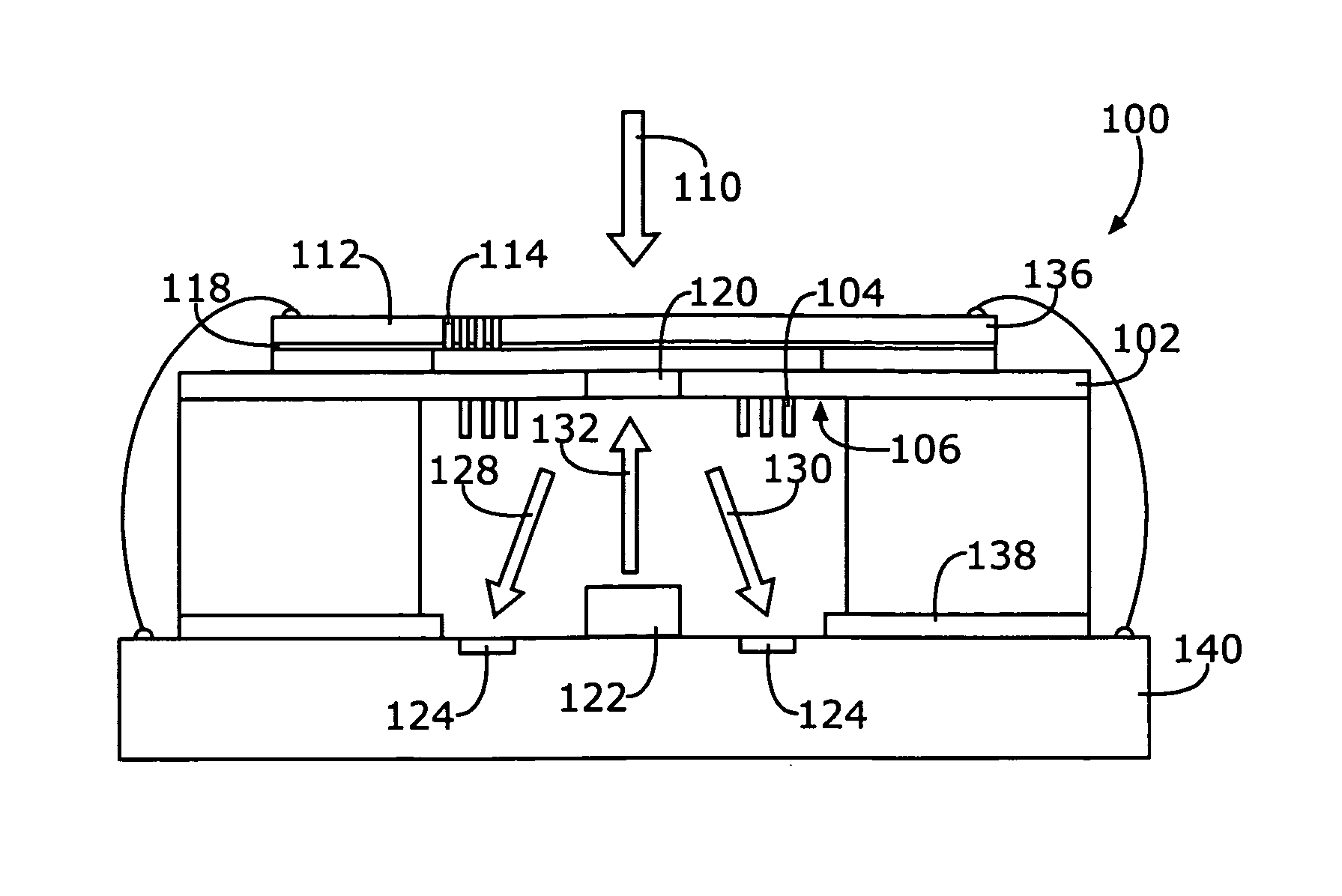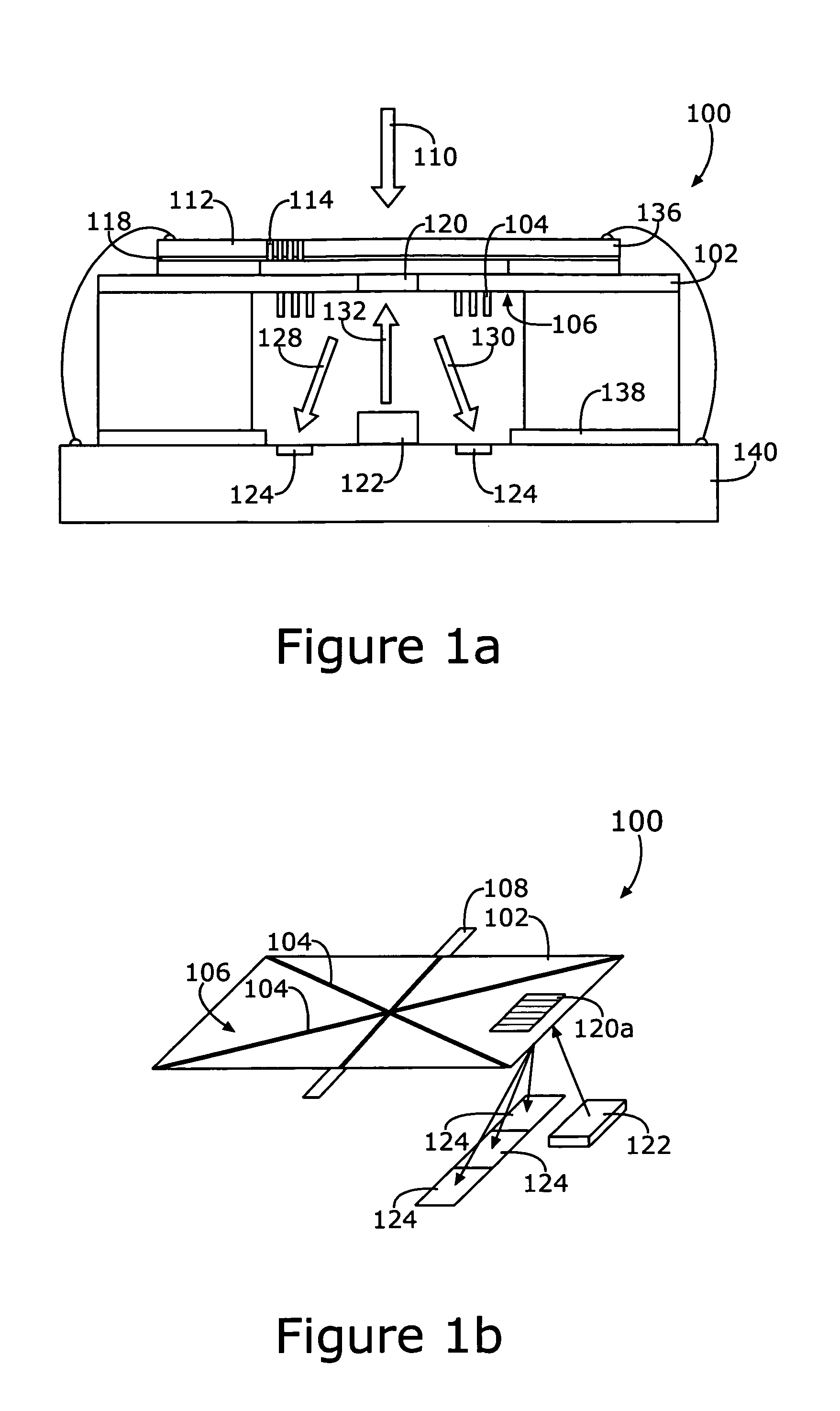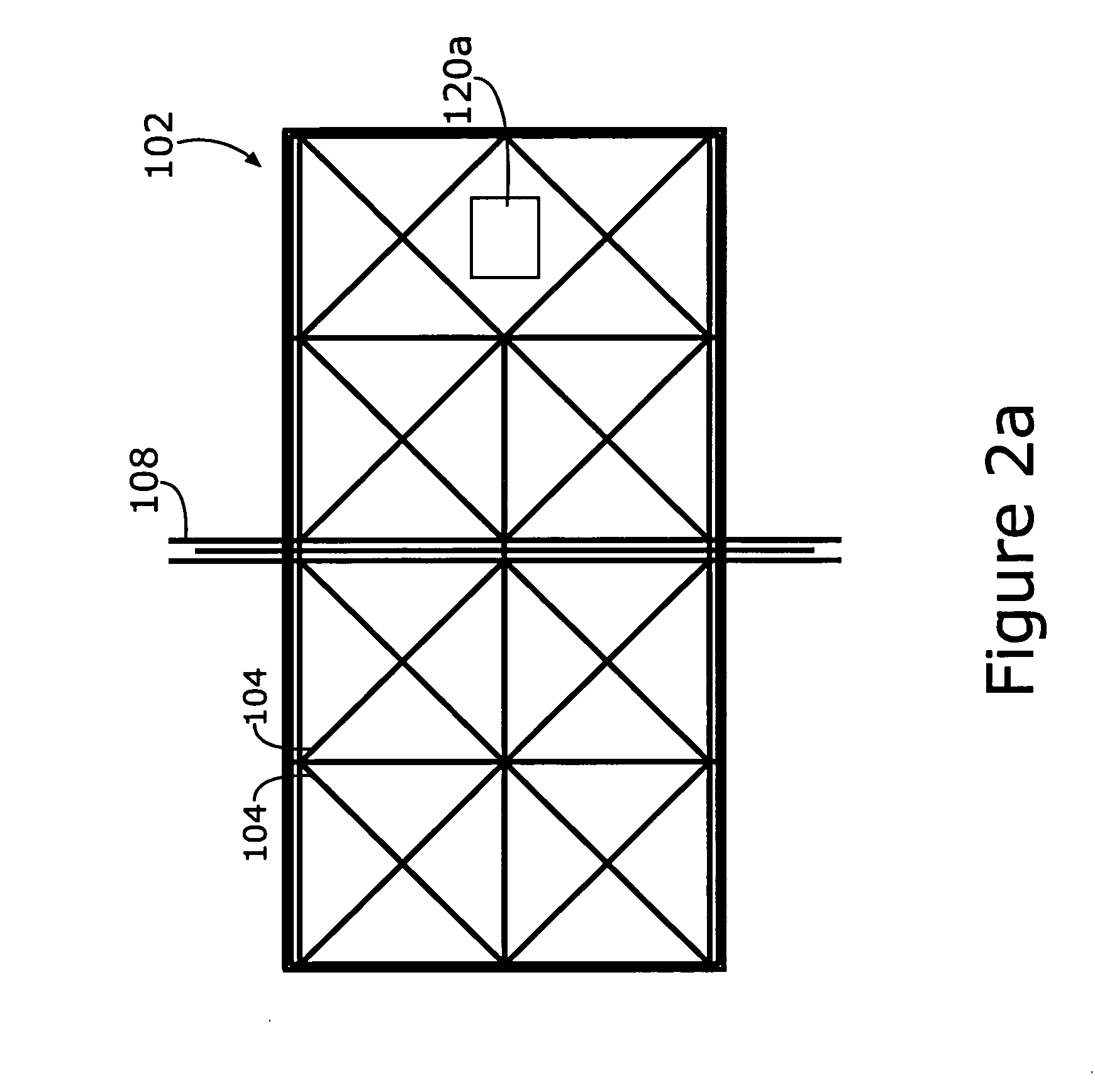Optical sensing in a directional MEMS microphone
a technology of optical sensing and directional mems, which is applied in the field of micromachined differential microphones and optical interferometry, can solve the problems of compromising the effectiveness of sound detection, affecting the speech intelligibility of the speaker, and the mechanical design of the diaphragm, so as to reduce external acoustic noise and improve speech intelligibility
- Summary
- Abstract
- Description
- Claims
- Application Information
AI Technical Summary
Benefits of technology
Problems solved by technology
Method used
Image
Examples
Embodiment Construction
[0032] Generally speaking, the present invention is a directional microphone incorporating a diaphragm, movable in response to sound pressure and an optical sensing mechanism for detecting diaphragm displacement. The diaphragm of the microphone is designed to respond to pressure gradients, giving it a first order directional response to incident sound. This mechanical structure is integrated with a compact optical sensing mechanism that uses optical interferometry to generate an electrical output signal representative of the sound impinging upon the microphone's diaphragm. The novel structure overcomes adverse effects of capacitive sensing of microphones of the prior art.
[0033] One of the main objectives of the present invention is to provide a differential microphone suitable for use in a hearing aid and which uses optical sensing in cooperation with a micromachined diaphragm. Of course other applications for sensitive, miniature, directional microphones are within the scope of th...
PUM
 Login to View More
Login to View More Abstract
Description
Claims
Application Information
 Login to View More
Login to View More - R&D
- Intellectual Property
- Life Sciences
- Materials
- Tech Scout
- Unparalleled Data Quality
- Higher Quality Content
- 60% Fewer Hallucinations
Browse by: Latest US Patents, China's latest patents, Technical Efficacy Thesaurus, Application Domain, Technology Topic, Popular Technical Reports.
© 2025 PatSnap. All rights reserved.Legal|Privacy policy|Modern Slavery Act Transparency Statement|Sitemap|About US| Contact US: help@patsnap.com



